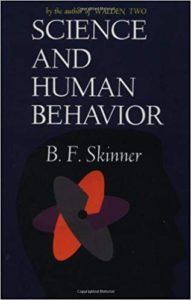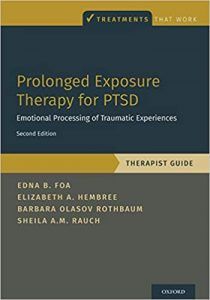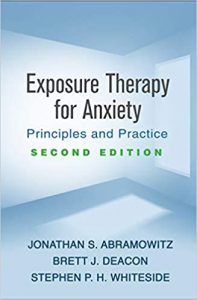What Is Behavior Therapy? Your Ultimate Practitioner’s Guide
 “Behavioral modification therapy is as easy as ABC: antecedents, behavior, consequences” was a catchphrase we used when I was a mental health nurse preparing long-stay psychiatric patients for discharge into the local community.
“Behavioral modification therapy is as easy as ABC: antecedents, behavior, consequences” was a catchphrase we used when I was a mental health nurse preparing long-stay psychiatric patients for discharge into the local community.
These patients had experienced decades of hospitalization leading to a loss of the life skills required to live independently, and the rehabilitation unit followed the principles of behavior therapy.
This article will examine the origins of behavior therapy, its development, real-life applications, and the controversies surrounding the approach. Finally, we examine the differences between behavioral therapy, Cognitive-Behavioral Therapy (CBT), and psychoanalysis, and then follow with a list of recommended books.
Before you continue, we thought you might like to download our three Positive CBT Exercises for free. These science-based exercises will provide you with detailed insight into positive CBT and give you the tools to apply it in your therapy or coaching.
This Article Contains:
- What Is Behavior Therapy?
- Brief History of Behavior Therapy
- What Does It Focus On?
- 3 Interesting Theories and Research Findings
- 3 Real-Life Examples of Behavior Therapy
- The Goals of a Behavior Therapy Session
- 6 Pros and Cons of Behavior Therapy
- Behavior Therapy vs CBT and Psychoanalysis
- 3 Books on the Topic
- PositivePsychology.com’s Resources
- A Take-Home Message
- References
What Is Behavior Therapy?
Behavior therapy refers to a set of therapeutic interventions that aim to eliminate maladaptive, self-defeating behaviors and replace them with healthy, adaptive behaviors.
Behavior is learned and is a product of conditioning; therefore, during behavior therapy, the client learns constructive behaviors that overcome maladaptive behaviors and achieve their intended goals (Bambara & Knoster, 1998).
Traditional behavior therapy is still used to treat phobias and compulsions through systematic desensitization and extinction strategies. It is also used to motivate adaptive behaviors in therapeutic communities using token economies (Kazdin, 1982).
Tokens are given as rewards for adaptive behaviors leading to the acquisition of privileges, such as special food, extra leisure time, or enjoyable activities. Examples of token economies include residential communities for those with learning difficulties, rehabilitation communities for those recovering from substance abuse, and different types of correctional facilities.
Behavior therapy has developed and diversified over the years into a range of different psychological interventions when combined with other approaches. Examples include:
- Behavioral therapy and cognitive psychology, resulting in Cognitive-Behavioral Therapy
- Mindfulness and CBT, resulting in Mindfulness-Based Cognitive Therapy
- Mindfulness and contextual behavioral science, resulting in Acceptance and Commitment Therapy
- CBT, mindfulness, and humanism, resulting in Dialectical Behavior Therapy
All these interventions have one common foundation: They aim to transform the client’s behavior so that their actions align with their desired life goals.
Most of this article will focus on behavior modification therapy, which has direct origins in behaviorism, or what is now called behavioral science.
Brief History of Behavior Therapy
Behavior therapy developed during the early 1900s and became an established approach to the treatment of various mental health problems in the 1950s and 60s. It has roots in behaviorism, which emerged from the study of the relationship between stimulus, response, and reinforcement as features of the learning process (McKenna, 1995).
While John B. Watson is regarded as the father of behaviorism, he developed his ideas by exploring the discoveries of Ivan Pavlov (1927/1960).
When Pavlov was researching dogs’ digestive processes, he observed the fact that associations developed when a stimulus (food) that triggered a digestive response (salivation) was paired with a stimulus that has no response (bell). The association that dogs made between the bell and food meant that eventually, the bell triggered salivation in the absence of food. Pavlov called this type of learned response classical conditioning.
Watson used Pavlov’s classical conditioning to emphasize that all behaviors resulted from learning. He researched the origins of phobias by studying a young child named Albert. Albert was not scared of rats at first, but after Watson paired the rat with a loud noise, this frightened Albert, and after several repetitions, he became afraid of rats. His fear was extinguished when the experiment was not repeated for a month (Watson, 1924/1997).
Next, B. F. Skinner (1963) discovered that the frequency of behavior depends on the events that follow the behavior, which he called operant conditioning. For example, if a behavior is rewarded, it is positively reinforced and more likely to be repeated. Conversely, if the behavior is ignored, it will be extinguished.
Meanwhile, Dollard and Miller’s contribution to behavioral theory identified four elements in behavior: drive, cue, response, and reinforcement (Metzner, 1963). Joseph Wolpe also discovered a process known as reciprocal inhibition, when eliciting a novel response diminishes the strength of a concurrent response. This led to his development of systematic desensitization to treat phobias (Metzner, 1963).
Finally, Bandura (1977) applied the principles of classical and operant conditioning to develop social learning theory. Bandura discovered how people learn through the observation of others’ behavior or modeling. All these principles of behaviorism have informed the development of behavior therapy.
What Does It Focus On?

Behavioral extinction is often achieved by simply ignoring the behavior or through aversive conditioning (Bambara & Knoster, 1998).
Aversive conditioning can be used to help a client give up drinking alcohol. They can choose to be prescribed medication that makes them nauseous when they sip an alcoholic drink (Elkins, 1975). Soon, they will come to associate drinking alcohol with feeling ill, and this is likely to change their behavior. The intention is that they will develop an aversion to drinking alcohol.
Meanwhile, extinction strategies are often recommended to parents seeking to change a child’s behavior.
Often, parents unwittingly reinforce challenging behavior by paying the child more attention when they behave badly, and while this attention may be corrective or even punitive, this can lead to reinforcement of the behavior, especially if the child gets less attention when behaving well. Parents may be instructed to ignore their child’s tantrums or use timeout to remove all reinforcement (Ducharme & Shecter, 2011).
Timeout is a behavioral modification strategy used to extinguish unwanted behavior and provide a child with the opportunity to self-soothe. Meanwhile, appropriate behavior is rewarded when the timeout has ended. The video below describes this popular behavior management tool.
Behavioral therapy in clinical settings usually begins by conducting a functional behavioral assessment by conducting a systematic observation of antecedents, behaviors, and consequences (ABC), using the ABC checklist (Maag, 1995).
The contextual elements surrounding a behavior are termed the contingencies that shape behavior and determine its function. The ABC checklist is often used to monitor and implement behavior modification strategies, especially to manage challenging behavior in therapeutic communities, in-patient mental health facilities, forensic settings, and correctional facilities.
3 Interesting Theories and Research Findings
1. Changing your brain
Behavioral scientists have found that learning new behavior can change the neural pathways in the brain due to neuroplasticity (Voss et al., 2017). This has many implications for behavior therapy interventions that require a client to take action by learning new skills.
One well-documented example is taking up mindfulness meditation as a stress management tool and its impact on neurophysiology (Bremner et al., 2017).
2. Enhanced learning
New research teaching adult stroke patients how to play entertainment-based video games has shown that this behavioral intervention has the potential to reactivate dormant neuromodulators, helping to develop new neural pathways in the brain (Bavelier et al., 2010).
This behavioral therapy approach uses environmental enrichment to reactivate the neuromodulators that enable developing brains to learn more quickly and deeply than mature brains.
3. Virtual reality
Action-Centered Exposure Therapy (ACET) is a new behavior therapy-oriented approach that uses an interactive virtual reality environment to treat patients with post-traumatic stress disorder (PTSD) and reduce psychological distress (Kamkuimo Kengne et al., 2018).
ACET uses interactive gamification techniques that place the user in an active learning environment to stimulate new, unproblematic associations to previously traumatizing stimuli through graded levels of indirect and direct exposure. ACET is a new approach to treating PTSD, and more experiments are needed.
3 Real-Life Examples of Behavior Therapy
How is this applied in real life? Let’s take a look.
1. Behavioral parent training (BPT)

BPT equips parents with the skills required to change their own behavior in a way that evokes behavioral changes in their children.
Parents are trained in behavioral management practices that reinforce their child’s prosocial behavior and extinguish disruptive behavior.
Parental training is usually required when treating a range of children’s behavioral issues, including attention deficit-hyperactivity disorder (ADHD), aggression, hyperactivity, impulsive behavior, irritability, and school refusal.
Misbehaving children may not remember a therapist’s suggestion for more prosocial, adaptive behaviors or remain motivated to enact them when experiencing intense negative emotions in their domestic or school setting. It is essential that parents are also involved.
This video by the CHOPS Research Institute describes how BPT is used to support the caregivers of children with ADHD.
2. Applied behavioral analysis (ABA) therapy
ABA therapy for children with autism spectrum disorders (ASD) addresses behavioral excesses and deficits unique to each child.
Behavior analysts are not concerned with theories of the causes of autism. Their focus on behavior alone has led to the steady development and refinement of their approach, making modern ABA programs flexible, functional, and fun for the child (Alberto & Troutman, 1999).
Research shows that ABA therapy (also known as early intensive behavioral intervention) is most effective when used intensively (30–40 hours per week). However, specific ABA techniques that target one type of behavior only can also be very helpful without an intensive program.
The video below by the Hopebridge Autism Therapy Centers explains how ABA therapy works and has roots in the work of behavioral psychologist B. F. Skinner.
3. Exposure-based behavior therapy
Exposure-based behavioral therapies expose phobic clients to the stimuli that frighten them and have a strong evidence base demonstrating their effectiveness (Böhnlein et al., 2020).
From a behavioral perspective, specific phobias are maintained by the avoidance of phobic stimuli. This avoidance prevents the phobic client from learning new, adaptive behavioral responses to the feared stimuli. Exposure therapies support a phobic client’s re-engagement with feared stimuli or situations (either in reality, virtual reality, or imaginal exercises) to desensitize them over time.
Typically, exposure-based behavioral therapy follows an individually tailored fear hierarchy that starts with mildly anxiety-provoking stimuli and builds up to panic-inducing situations, stage by stage.
Exposure-based behavioral therapy is also accruing an evidence base demonstrating its efficacy for treating PTSD, anxiety, and depression. The video below by licensed counselor Justin K. Hughes explains more.
The Goals of a Behavior Therapy Session
In short, behavior therapists help their clients achieve their personal and professional goals by collaborating with them on the following:
- Setting mutually agreed goals
- Eliminating maladaptive behaviors that prevent goal achievement
- Replacing maladaptive behaviors with constructive behaviors that meet the agreed goals (Haynes & O’Brien, 2000).
6 Pros and Cons of Behavior Therapy
As with so many things in life, one has to look at it from all angles, and consider the negatives as well as the positives. Let’s take a look at the pros and cons of behavior therapy.
3 Advantages
- Behavioral modification therapy in token economies, such as rehabilitation centers and correctional institutions (Kazdin, 1982), applies instant rewards for behavioral compliance and pro-social behavior. This has very effective results in the short term.
- Because of the instantaneous feedback provided by behavior modification techniques, researchers found these interventions to be very effective with students who may struggle with longer term memory and delayed gratification, such as children with ADHD, ASD, and other learning difficulties (Nowacek & Mamlin, 2007).
- Behavior-based exposure therapies for PTSD and systematic desensitization through gradual exposure to phobic stimuli are very cost-effective treatments that have positive long-term results (Resick et al., 2012).
3 Disadvantages
- The effects of token economies have very little application outside the institution where they are applied, such as rehabilitation and correctional facilities. In the absence of other therapeutic modalities, relapse and recidivism rates remain high (Kazdin, 1982).
- Behavioral therapy needs to be very consistently implemented, which requires a high degree of skill. Those without the necessary skills may revert to punishment when managing challenging behavior, which can arouse defensiveness and further behavioral problems (Maag, 1995).
- Behavior therapy can overlook the fact that people have different learning styles and learn in different ways (Bandura, 1977). It can seriously underestimate the complexity of human development and learning, especially the biological components of neurodiversity and personality, the impact of the socio-political environment (e.g., class, race, gender, and sexuality) on learning, and the impact of early childhood experiences on neuroplasticity and learning ability (Bavelier et al., 2010).
Behavior Therapy vs CBT and Psychoanalysis

Meanwhile, CBT investigates the relationship between a client’s thoughts, feelings, and behavior and how they reinforce each other in terms of repetitive internal scripts. CBT challenges these maladaptive scripts and replaces them with activities that reinforce adaptive behavior by attending to a client’s cognition, affect, and behavior simultaneously (Carr et al., 2009).
Finally, psychoanalysis attends to the root causes of psychological problems in early childhood experiences that are often repeated unconsciously in the relational patterns of adult life. Psychoanalysis focuses on interpreting the client’s internal world to dissolve unconscious linkages between repressed early experiences and adult psychological functioning to improve a client’s mental health and overall quality of life (Nash, 1999).
3 Books on the Topic
We suggest picking any one of the following recommended reads, to learn and understand more about behavior therapy.
1. Science and Human Behavior – B. F. Skinner
This book is considered a psychology classic and is a seminal text in the field of behavioral therapy.
Skinner’s theory of human behavior influenced a generation of psychologists and inspired many of the strategies used in behavioral therapy today.
Find the book on Amazon.
2. Prolonged Exposure Therapy for PTSD: Emotional Processing of Traumatic Experiences – Edna B. Foa, Elizabeth A. Hembree, Barbara Olasov Rothbaum, and Sheila A. M. Rauch
This book provides therapists with all the tools they need to treat PTSD clients with prolonged exposure therapy, a scientifically tested behavior therapy intervention used to treat victims of trauma, including war veterans, abuse survivors, and survivors of accidents and natural disasters.
This treatment exposes clients to imagery associated with their traumatic memories, as well as real-life situations related to the traumatic event in carefully staged phases. Breathing retraining is taught as a method for helping the client manage anxiety in daily life.
The book is a manual designed to help clinicians help their clients reclaim their lives from PTSD.
Find the book on Amazon.
3. Exposure Therapy for Anxiety: Principles and Practice – Jonathan S. Abramowitz, Brett J. Deacon, and Stephen P. H. Whiteside
This book describes how exposure therapy focuses on changing the behaviors that maintain anxiety rather than investigating its causes.
While anxiety appears to be mediated by both environmental and biological variables, psychological treatments cannot “undo” historical events or change biological predispositions.
The book explains the theoretical basis of exposure therapy in behavioral science and how to conduct the intervention, presents a series of case study examples, and discusses its application from a variety of behavioral perspectives, including Acceptance and Commitment Therapy.
Find the book on Amazon.
PositivePsychology.com’s Resources
PositivePsychology.com has a range of resources to support your use of behavioral therapy.
You can download our 3 Goal Achievement Exercises for free. In addition, the Reward Replacement Worksheet identifies the behaviors a client would like to change and how to replace them with new goal-oriented behaviors.
Meanwhile, the Behavior Contract worksheet creates a concrete agreement with a client’s friends and family to identify how they can help your client develop greater wellbeing through behavioral change.
Our Positive Psychology Toolkit© also contains a great selection of useful behavior therapy tools.
One of these is the Changing Behavior Through Positive Reinforcement tool, which helps your client achieve their goals by planning rewards that reinforce adaptive behaviors. The tool ensures clients understand that:
- Changing behavior takes time.
- They should target only one or two behaviors at a time.
- Setbacks are likely.
- Rewards should be easy to achieve and not entail any sense of remorse.
Also, the Habit Tracker tool helps clients monitor the changes in their behavior to help break bad habits and develop positive ones. The above points also apply in addition to the following:
- The habit tracker should be placed where it is easily visible.
- Each old and new habit should be recorded immediately after the behavior has occurred.
- The cue to track and record new habits is the completion of the habit itself.
- A habit tracker is not static. Rather, it’s a flexible tool that can be reviewed and adjusted when needed.
If you’re looking for more science-based ways to help others through CBT, check out this collection of 17 validated positive CBT tools for practitioners. Use them to help others overcome unhelpful thoughts and feelings and develop more positive behaviors.
A Take-Home Message
Behavior therapy has a history in the earliest foundations of psychological science. Behavior therapy does not attend to the inner world of the client but aims to change observable behavior only.
The overall objective is to replace maladaptive behaviors with healthy behaviors that will enable a client to achieve their life goals.
Behavior therapy has inspired a diverse range of contemporary psychological therapies, including CBT and the third wave of mindfulness-based behavioral therapies. However, it remains the intervention of choice for specific behavioral problems, especially in therapeutic communities. Behavior therapy requires total consistency from the behavior therapist to be effective – and a high degree of skill.
We hope you enjoyed reading this article. For more information, don’t forget to download our three Positive CBT Exercises for free.
- Abramowitz, J. S., Deacon, B. J., & Whiteside, S. P. H. (2019). Exposure therapy for anxiety (2nd ed.). Guilford Press.
- Alberto, P. C., & Troutman, A. C. (1999). Applied behavior analysis for teachers (5th ed.). Merrill.
- Bambara, L. M., & Knoster, T. (1998). Designing positive behavior support plans. American Association on Mental Retardation.
- Bandura, A. (1977). Social learning theory. Prentice Hall.
- Bavelier, D., Levi, D. M., Li, R. W., Dan, Y., & Hensch, T. K. (2010). Removing brakes on adult brain plasticity: From molecular to behavioral interventions. Journal of Neuroscience, 30(45),14964–14971.
- Böhnlein, J., Altegoer, L., Muck, N. K., Roesmann, K., Redlich, R., Dannlowski, U., & Leehr, E. J. (2020). Factors influencing the success of exposure therapy for specific phobia: A systematic review. Neuroscience and Biobehavioral Reviews, 108, 796–820.
- Bremner J. D., Mishra, S., Campanella, C., Shah, M., Kasher, N., Evans, S., Fani, N., Shah, A. J., Reiff, C., Davis, L. L., Vaccarino, V., & Carmody, J. (2017). A pilot study of the effects of mindfulness-based stress reduction on post-traumatic stress disorder symptoms and brain response to traumatic reminders of combat in Operation Enduring Freedom/Operation Iraqi Freedom combat veterans with post-traumatic stress disorder. Frontiers in Psychiatry, 8.
- Carr, J. E., LeBlanc, L. A., & Love, J. R. (2009). Experimental functional analysis of problem behavior. In W. O’Donohue & J. E. Fisher (Eds.), General principles and empirically supported techniques of cognitive behavior therapy. John Wiley & Sons.
- Ducharme, J. M., & Shecter, C. (2011). Bridging the gap between clinical and classroom intervention: Keystone approaches for students with challenging behavior. School Psychology Review, 40, 257–274.
- Elkins, R. L. (1975). Aversion therapy for alcoholism: Chemical, electrical, or verbal imaginary? International Journal of the Addictions, 10(2), 157–209.
- Foa, E., Hembree, E. A., Rothbaum, B. O., & Rauch, S. (2019). Prolonged exposure therapy for PTSD: Emotional processing of traumatic experiences (2nd ed.). Oxford University Press.
- Haynes, S. N., & O’Brien, H. W. (2000). Principles and practice of behavioral assessment. Kluwer Academic.
- Kamkuimo Kengne, S. A., Fossaert, M., Girard, B., & Menelas. B. A. J. (2018). Action-centered exposure therapy (ACET): A new approach to the use of virtual reality to the care of people with post-traumatic stress disorder. Behavioral Sciences, 8(8),76.
- Kazdin, A. E. (1982). The token economy: A decade later. Journal of Applied Behavior Analysis, 15, 431–445.
- Maag, J. W. (1995). Behavior management: Theoretical implications and practical applications. Lincoln.
- McKenna, G. (1995) Learning theories made easy: Behaviourism. Nursing Standard, 9(29), 29–31.
- Metzner, R. (1963). Re-evaluation of Wolpe and Dollard/Miller. Behaviour Research and Therapy, 1(2–4), 213–215.
- Nash, J. (1999). The function of femininity as a hollow container: A feminist revision of Klein’s theory of thinking. Psychoanalytic Studies, 1(2), 159–176.
- Nowacek, E. J., & Mamlin, N. (2007). General education teachers and students with ADHD: What modifications are made? Preventing School Failure: Alternative Education for Children and Youth, 51(3), 28–35.
- Pavlov, I. P. (1960). Conditioned reflex: An investigation of the physiological activity of the cerebral cortex. Dover Publications. (Original work published 1927)
- Resick, P. A., Bovin, M. J., Calloway, A. L., Dick, A. M., King, M. W., Mitchell, K. S., Suvak, M. K., Wells, S. Y., Stirman, S. W., & Wolf, E. J. (2012). A critical evaluation of the complex PTSD literature: Implications for DSM-5. Journal of Traumatic Stress, 25(3), 241–251.
- Skinner, B. F. (1963). Operant behavior. American Psychologist, 18(8), 503–515.
- Skinner, B. F. (1965). Science and human behavior. Free Press.
- Tucker, S., Gross, D., Fogg, L., Delaney, K., & Lapporte, R. (1998). The long-term efficacy of a behavioral parent training intervention for families with 2-year-olds. Research in Nursing and Health, 21(3), 199–210.
- Voss, P., Thomas, M. E., Cisneros-Franco J. M., & de Villers-Sidani, É. (2017). Dynamic brains and the changing rules of neuroplasticity: Implications for learning and recovery. Frontiers in Psychology, 8, 1657.
- Watson, J. B. (1997). Behaviorism. Routledge. (Original work published 1924)
Read other articles by their category
- Body & Brain (49)
- Coaching & Application (57)
- Compassion (26)
- Counseling (51)
- Emotional Intelligence (24)
- Gratitude (18)
- Grief & Bereavement (21)
- Happiness & SWB (40)
- Meaning & Values (26)
- Meditation (20)
- Mindfulness (45)
- Motivation & Goals (45)
- Optimism & Mindset (34)
- Positive CBT (28)
- Positive Communication (20)
- Positive Education (47)
- Positive Emotions (32)
- Positive Leadership (18)
- Positive Parenting (4)
- Positive Psychology (33)
- Positive Workplace (37)
- Productivity (16)
- Relationships (46)
- Resilience & Coping (36)
- Self Awareness (21)
- Self Esteem (37)
- Strengths & Virtues (31)
- Stress & Burnout Prevention (34)
- Theory & Books (46)
- Therapy Exercises (37)
- Types of Therapy (64)








